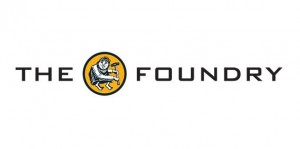 Did you ever wonder how the magic of films like Harry Potter, the sci-fi superhero-ness of Ra.One, or even Elizabethan England in 2012 like in The King’s Speech is created? How are all those visual special effects added and layered to make it look so real? One of the companies that provides the software that is integral in making those scenes, whether it is Shah Rukh Khan in Ra.One able to throw cars and land from the top of the building or the telephone poles disappear in a period pieces or the robots to fighting to save the world, look totally realistic is The Foundry, in Soho in London. Bill Collis, the CEO of the company, sat down to talk with us about their incredible tool sets, including the compositor tool set Nuke, which makes us believe that instead of being filmed in front of a green screen with the actor hanging by cable that Shah Rukh can really fly! (He can… can’t he?)
Did you ever wonder how the magic of films like Harry Potter, the sci-fi superhero-ness of Ra.One, or even Elizabethan England in 2012 like in The King’s Speech is created? How are all those visual special effects added and layered to make it look so real? One of the companies that provides the software that is integral in making those scenes, whether it is Shah Rukh Khan in Ra.One able to throw cars and land from the top of the building or the telephone poles disappear in a period pieces or the robots to fighting to save the world, look totally realistic is The Foundry, in Soho in London. Bill Collis, the CEO of the company, sat down to talk with us about their incredible tool sets, including the compositor tool set Nuke, which makes us believe that instead of being filmed in front of a green screen with the actor hanging by cable that Shah Rukh can really fly! (He can… can’t he?)
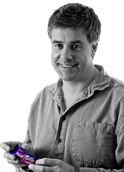 Tell me a little bit about The Foundry and the work you do.
Tell me a little bit about The Foundry and the work you do.
We supply post-production software to the film industry. We’ve been around since 1996, so for quite a long time now. Yeah, we’re feeling a bit old. In the first decade we made plug-ins for people like AutoDesk systems products and Apple Shake and Adobe’s products. 2007 is really where we really saw the explosive growth of The Foundry. From 2007 and on we had a range of host applications and our main one is Nuke, the compositor. It’s an industry standard compositor used in every major film you see these days. On top of that we have a 3D texture-painting product called Mari and lighting product called Katana and a Hiero, which is a collaborative tool to work with Nuke and stereo tool set Ocula. So we’ve got a really quite a broad range of tools, but they are all aimed at people doing high-end VFX look. It used for VFX work for film for broadcast or commercials but it’s sort of the top end people of that market.
So explain what compositing does in a film.
If you imagine your film, it’s got lots of different shots and you use an editor to put all your shots together. If you just think of one of those shots in a modern film, it’s typically made up of many, many layers. So you might have filmed a hero actress against a green screen in a studio and you might have a robot transformer created in a modeling package and then you might have a virtual background again created in a modeling package or in a package like Nuke… then the compositing bit of it is where you take those three elements and you layer them together in a realistic way to produce a beautiful final shot. If you think of any one shot in a film it’s made up of many, many layers, possibly hundreds of different layers. Compositing is combining those layers together. And not only big VFX films, but even in a film that you think does not have any special effects at all, something like The King’s Speech or something like that, it’s absolutely laden with special effects, because old fashioned London is almost certainly a set extension in an CG model. Then there would be all sorts of effects like to remove the jet airplane that flew across during the shot or remove the telegraph poles that clearly shouldn’t be there. So all of that sort of thing and to manage the look would be done within Nuke.
I was just going to ask, how much is this used in films that are not special effects laden? Is it used on regular films to change scenes?
It’s used all over the place and a lot in cases where you wouldn’t know anything had happened. So there are many, many films where the best results from Nuke will be that you don’t see them. It looks like a very traditional Elizabethan street scene or something, but actually it will be laden with effects and the 3D compositing to build up the street scene and to add the actors in and add things like rain or splashes from puddles or adding in snow, having particle effects, or any of those things. All of that will be combined just to make a realistic looking picture even when you weren’t there to film it in the first place.
It’s very artist intensive so you clearly need the best artist, which is very, very expensive. The artists are incredibly skillful people and the good ones are incredibly hot demand, everyone wants the best compositors, the best modelers, best riggers of course.
You know most of the top grossing films were effects laden, either like the Transformers type films or Harry Potter type films, or at the other end King’s Speech type films. There’s a very strong correlation between large amounts of post-production work, which typically means Nuke, and box-office revenues. Possibly more correlation work between the amount of post-production and the box office revenues then there is between sort of quality of or value of the actors and actresses. So a top very, very high-end actress hopefully will guarantee you a big box-office return, but isn’t as likely too as large amounts of FX shots.
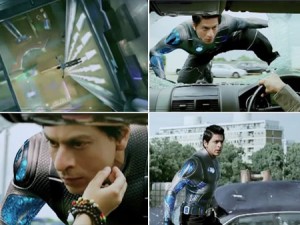 I was actually surprised that this company is in London. I would have suspected Hollywood.
I was actually surprised that this company is in London. I would have suspected Hollywood.
Actually it’s very interesting. There is a significant group of high-tech software and hardware companies centered around London either in Soho or outskirts providing services to the post-production industry. There’s a whole group of us that have actually grown up in this area and so there’s really, really strong group of people with really strong skills and a lot of experience here. I think it’s grown up here partly because of the concentration of really high-quality post-production houses. So possibly this is unique in the world because within a square mile of Soho, you’ve got half a dozen really big post-production houses and dozens of much smaller ones and for historic reasons that they have all concentrated in Soho. There’s a great culture of sharing and meeting in the pubs in the evening and chatting. I think out of that culture in the last two decades, it spawned some of the high-tech software companies and hardware companies that have provided services and that’s exactly how The Foundry started. We’ve grown into a really exciting vibrant community. So it’s great for us at the moment because if we want to see anyone of our big UK customers or London customers they’re no more than a 5-minute walk from our door and I don’t think you really get that anywhere else in the world. It’s much more dispersed in the US, there are groups of course near Hollywood, in San Francisco, groups in the beach cities, but in London you’ve got this very, very dense concentration of post-houses and the tools companies that have grown up around them. Which makes it very exciting! And we were really supported along the way by the UK government, who has been very supportive of the industry and that really helped.
Let’s move onto Bollywood. It’s not as known for its special effects in its films as much. It has increased and last year or course we had the special effects laden Ra.One. What has been your work in India?
The Indian film industry has been very significant for The Foundry, particularly over the last five years. We have invested a lot of time going out there. I have personally been out there and my staff has been out there many times. We ran a brilliant master class in Mumbai last year. We have a lot of very big significant customers there. A lot of them are international, so you have companies like Reliance, Prime Focus who really play on the international stage but use our software a lot. So there is that type of customer and then there is the smaller, up coming customers like Red Chillies, who actually are no longer particularly small. We have worked with them for a while and seen them grow and see them do some really incredible VFX work. My view on the Indian market is that it has been fascinating to see it develop really rapidly. To see the quality of work there develop really rapidly. There has also been a lot of outsourcing work sent there. We have seen roto work and 2D to 3D conversion going on in India. There is a lot of high quality VFX work happening there and animation work happening there.
We also talked about the VFX work done in Ra.One, which did use The Foundry’s product. Ian Hall, who was also in on our chat, said, “I liked it a lot. Though with Ra.One it felt like every single special effect you have ever seen throw in the one film. The coherency of the story was not the strength of it, but it certainly showcased some pretty incredible visual effects work that they have done on it. We have actually featured a couple of the scenes from the film on our show reel. It shows the quality that they have done. It is pretty impressive stuff. I guess if that is really what the Bollywood market wants to see is another thing.”
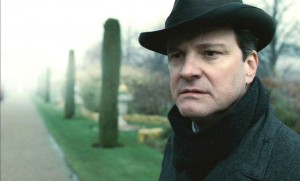 When I talked to the director of Ra.One he said he had a hundred guys just working in Red Chillies offices on the special effects. It really seems as if this is something they are really working on for the films. Is this something you would say to be true?
When I talked to the director of Ra.One he said he had a hundred guys just working in Red Chillies offices on the special effects. It really seems as if this is something they are really working on for the films. Is this something you would say to be true?
Absolutely. We have really, really seen the skill set of the local companies improve dramatically and are pretty much up to the standards you would see for any Western company. Red Chillies is a really good example. They have just plugged away and year on year they have improved and it is just amazing quality stuff that they produce now. All over it just is getting better and better.
How does the post-production market in India differ from the rest of the world?
In many ways the Indian post-production market is not unlike the rest of the world. The market generally is incredibly competitive and quality visual effects work is notoriously expensive. Early on there was a trend of major studios outsourcing a lot of the more basic, repetitive visual effects work to India. As time has passed, these facilities have become more and more skilled and are using advanced software like The Foundry’s NUKE to really push the boundaries of their work. Today the Indian post market has really raised the bar and is on par with some of the major western post houses. The creative talent is showcased by homegrown talent from studios like Red Chillies. This quality is even starting to filter down into as we talked about the Bollywood project like Ra. One.
Many VFX is outsourced to India with Indian studios doing the VFX work on so many Hollywood films. Talk to us a little about that.
The simple fact is that there is a lot of great talent working in India. Big facilities like Prime Focus and Reliance have set up studios in the region and run very successful businesses as part of their global networks. VFX work is labour intensive and highly skilled. India has a growing pool of talent and the support of big studios, which is allowing it to thrive.
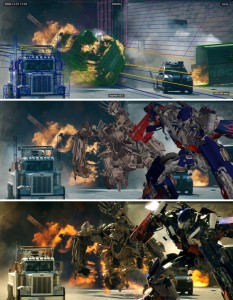 Where do you think VFX can go?
Where do you think VFX can go?
Studios and artists are constantly looking to create more and more advanced visual effects – pushing the boundaries and meeting the demands of studios and directors. In response the software industry we operate in is constantly innovating. We think of ourselves as enablers of creativity. Audiences expect to see more and more realistic images on screen. People know a bad effect when they see it. If a shot does not look realistic, it will distract the audience and pull them out of the world the film has created. Our tools allow artists to create shots of the highest possible quality.
Visual effects have become an integral part of every major feature film, television show and commercial. As we move forward I expect to see this trend continue and for the quality of work to keep increasing as we more towards more and more photorealistic looks.
You can check out their cool show reel here! See if you can spot SRK!










